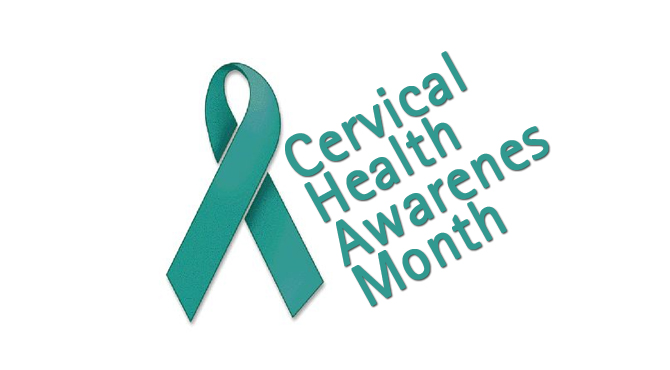DASHA® asked me to share some basic and important information on cervical cancer in honor of Cervical Health Awareness Month.
Staci E. Pollack, M.D. , Albert Einstein College of Medicine;
It is my pleasure to help educate the female members of the DASHA® community on this disease. Cervical cancer is a disease that affects more than 11,000 American women each year, but is very curable if caught early. The cervix is the bottom part of the uterus, or womb, and it is what dilates, or opens up, to allow a woman to give birth vaginally to a baby. The cervix is located at the top of the vagina, and it can be visualized during a gynecologic exam. Cervical cancer happens when normal cells in the cervix become abnormal and grow out of control.
Cervical cancer may not cause any symptoms at all in its early stages. The most common symptom is vaginal discharge or bleeding; especially concerning is bleeding that happens in between menstrual periods, after sex and/or after the menopause. It is important to know that while cervical cancer can cause bleeding, there are many other more common causes of bleeding. If you experience abnormal vaginal bleeding as discussed above, go to the doctor to be evaluated.
Since cervical cancer in its earliest forms often don’t have any symptoms at all, it is important that women undergo regular screening tests. The Pap smear is the most common screening test used for cervical cancer, and should be done on women starting at age 21. During a gynecologic exam, a doctor will place a speculum in the vagina to separate the walls of the vagina (the speculum can be metal or plastic, and looks like a duck-bill). The speculum exam should not cause pain, and it allows the doctor to see the cervix, and use a small brush to collect a small amount of cervical cells that are then sent to the laboratory to be looked at under a microscope. For women 30 years and older, the doctor may also test the cervical cells for a virus called HPV (human papillomavirus), certain strains of which cause cervical cancer.
Pap smears are now recommended to be done every 3 years for women aged 21-65 (or every 5 years if an HPV test is also done), sometimes more often depending on the results. If the Pap smear and/or HPV test results are abnormal, the doctor will recommend a colposcopy, which really is just a large magnifying microscope that allows the doctor to look at a close up view of the cervix and to take small biopsies of any abnormal-looking cervical tissue. Sometimes, the Pap smear and/or colposcopy don’t show cancer, but a “pre-cancer” that has a chance of turning into cancer, and these “pre-cancer” cells can be treated and/or monitored to prevent them from turning into a cancer. In order to diagnose cervical cancer, the doctor needs a biopsy (done during the colposcopy test).
Survival rates for women who caught the cervical cancer early, when it is confined to the cervix (even if the cancer is up to 4 cm big) have 5 year survival rates of 90-96% (depending on various factors), which means that 5 years after being diagnosed with cervical cancer, 90-96% of the patients are still alive. However, the later the cervical cancer is caught, the worse the prognosis. If the same women with cervical cancer as above have their cancer already spread to their lymph nodes, their 5 year survival goes down to 50-74%. This still means there is a good chance for a cure, but not as good as if the cancer were caught earlier. This speaks to the importance of going for recommended screening tests.
Treatments for cervical cancer depend on the stage of the disease (how early the cancer is caught and how extensive the disease has spread). The very earliest cervical cancers may be treated by removing part of the cervix (a “cone biopsy”), removing just the cervix (rarely and in special circumstances) or by performing a hysterectomy (removing the whole uterus with the cervix). More advanced cervical cancers may be treated by a more extensive form of a hysterectomy (called a radical hysterectomy). Radiation therapy and/or chemotherapy are sometimes used in addition to (or instead of) surgery in more advanced cases. The treatments chosen are to offer the best chances of a cure.
Women should go to their doctor for their annual pelvic exams and their regular Pap smears with the HPV test (if normal, every 5 years) or Pap smears without the HPV test (if normal, every 3 years), from age 21-65. If their Pap smear or HPV test comes back abnormal, they should get a colposcopy. If a woman has a history of abnormal Pap smears or “pre-cancer” cells, or if they have HIV or other immune diseases (that make the body less capable of fighting off the HPV infection or cancer), they will be recommended to go for screening tests more often. If a woman experiences abnormal vaginal bleeding, she should go to the doctor to be evaluated.
In addition, it is now recommended that all boys and girls receive the vaccine against the HPV virus (approved for ages 9-26). We now know that the vast majority of cervical cancer is caused by certain strains of the HPV virus. The HPV virus is spread by skin to skin contact, and by sex. The more sexual partners one has, the greater the risk of contracting the cancer-causing stains of HPV. The vaccine is most effective if given before someone becomes sexually active, and before they have been exposed to the strains of HPV protected by the vaccine. The most frequently given vaccine is called Gardasil.
Cervical cancer is a serious disease, but it can often be prevented by receiving the HPV vaccine (approved for ages 9-26) and caught early by going for routine screening with Pap smears (with or without the HPV test for women aged 30 and older). Early diagnosis or diagnosis at the “pre-cancer” stage offers excellent cure rates. If you have any other questions, you should discuss them with your doctor, as both you and your doctor together make up your medical team.






